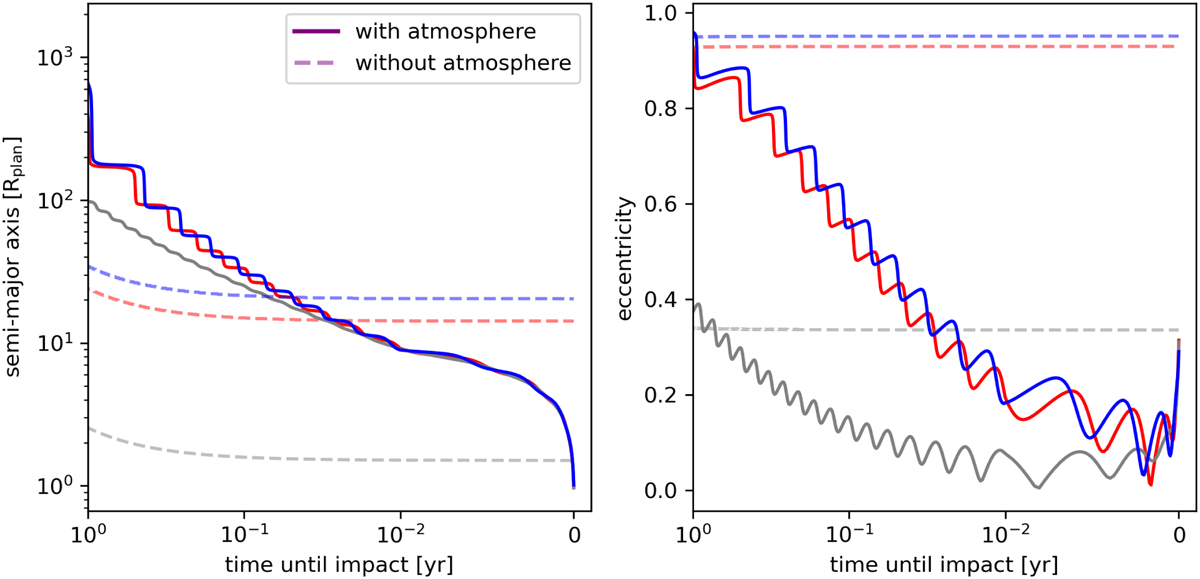Fig. 5

Download original image
Evolution of the semi-major axis and eccentricity of the trajectories shown in Fig. 3. The solid lines represent the pebbles with an atmosphere, while the faint, dashed lines represent the same pebbles without atmosphere. The x-axis shows the time until the impact and is scaled logarithmically between 100 and 10−2 yr and linearly between 10−2 and 0 yr. With an atmosphere, the eccentricity is reduced to zero during the final stage before the impact, after which the eccentricity rapidly increases, indicating a phase of strong orbital decay. This rapid decay is seen in the semi-major axis as well. Without atmosphere, there is hardly any change in the orbital elements. Note that, though it might seem in the left plot as if the red and blue pebbles without an atmosphere do not come close enough to the planet to impact it, the orbits of these pebbles are so eccentric that even though their semi-major axes remain large, their pericentres exactly coincide with the planet’s surface at t = 0, leading to an almost perfectly tangential impact, as can be seen in Fig. 6.
Current usage metrics show cumulative count of Article Views (full-text article views including HTML views, PDF and ePub downloads, according to the available data) and Abstracts Views on Vision4Press platform.
Data correspond to usage on the plateform after 2015. The current usage metrics is available 48-96 hours after online publication and is updated daily on week days.
Initial download of the metrics may take a while.


